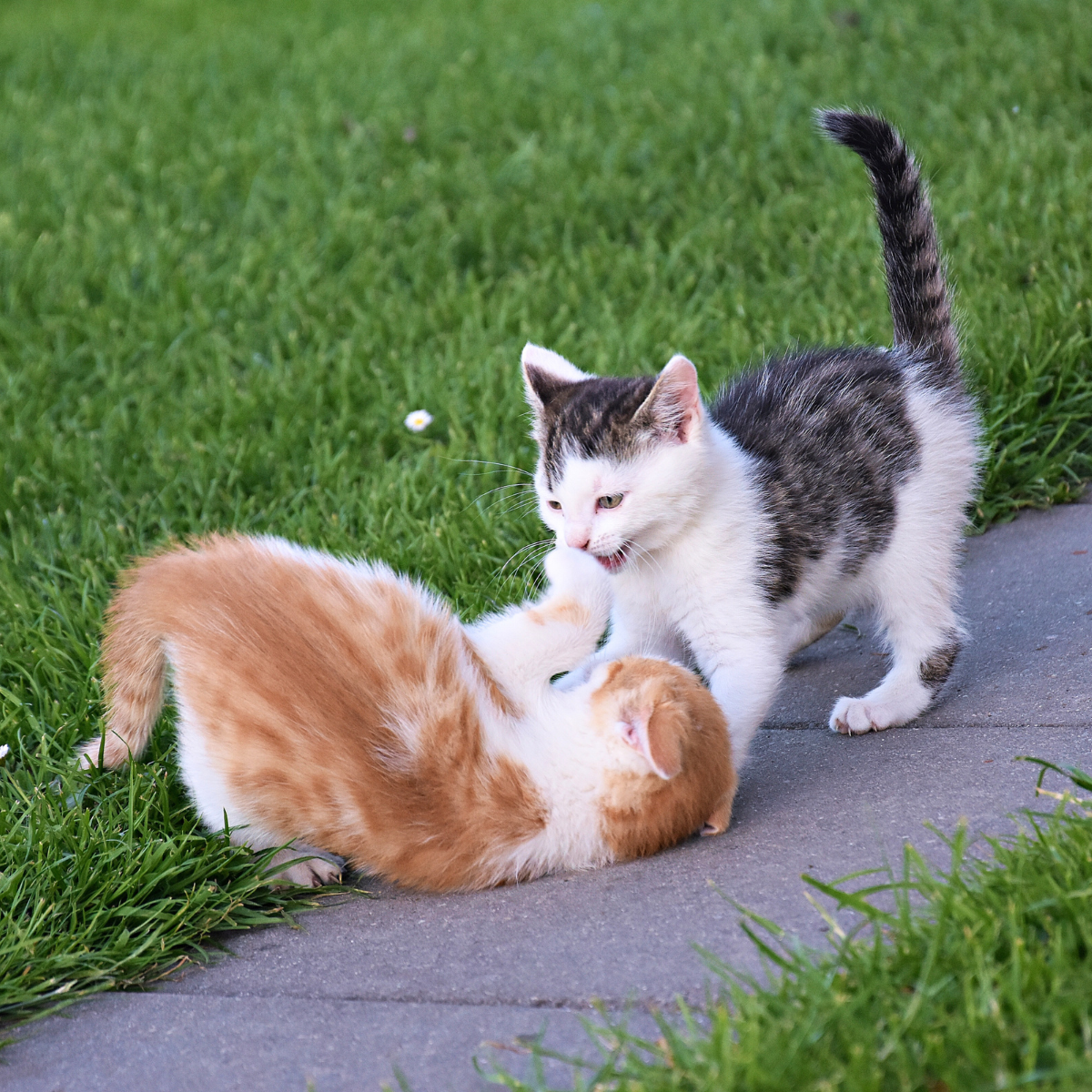Cats are playful creatures, and engaging in rough play is a natural part of their behaviour. It’s very common for kittens and young cats to engage in rough, active play because all feline play consists of mock aggression. Cats stalk, chase, pounce, swat, kick, scratch and bite each other – all in good fun. However, people often misinterpret this kind of behaviour as aggression when it’s directed toward them. Understanding the reasons behind this behaviour and how to manage it can help ensure a harmonious relationship between you and your feline friend.
Why Cats Play Rough
Cats engage in rough play as a way to practice hunting skills, expend energy, and interact with their environment. This behaviour is especially common in kittens and young cats. It’s important to note that:
- Playful Intentions: What may seem like aggression is often just playful behaviour. Cats may stalk, chase, pounce, swat, kick, scratch, and bite during play.
- Solitary vs. Social Play: Cats display two types of play behaviour: solitary play, directed towards objects like toys or boxes, and social play, directed towards fellow cats, people, or other animals.
What Not to Do
To prevent reinforcing rough play behaviour:
- Avoid Encouraging Play with Body Parts: Do not encourage your cat to play with your hands, feet, or any other body part. While it may be fun when you have a tiny kitten, it becomes painful and dangerous as your kitten grows up.
- Refrain from Using Certain Toys: Avoid toys that teach your cat to play with your hands, such as gloves with balls hanging from the fingers.
- Do Not Run or Block Movements: Never run from your cat or try to block his movements with your feet. These actions can cause your cat to intensify his play or become aggressive.
- Avoid Physical Punishment: Do not physically punish your cat for rough play. If you hit or slap your cat, he may perceive your actions as play and become even rougher. Alternatively, he might become fearful of your hands and respond by avoiding you or changing from play to real aggression.
Tips to Manage and Redirect Rough Play
- Provide a Variety of Toys: Offer different types of toys to determine your cat’s preferences. Cats generally enjoy batting at small toys like balls and fake mice. They also like to stalk, chase, and pounce on things that move, such as toys with feathers attached to flexible rods.
- Frequent Play Sessions: Engage in at least two ten-minute play sessions daily. Use long dangly toys or throw your cat’s favourite toys to keep the play directed away from your body.
- Redirect Attention: If your cat grabs your feet or hides to ambush you, carry toys with you and toss them ahead to redirect his attention.
- Introduce a Playmate: Consider fostering another cat or kitten as a playmate. A young, playful cat may be suitable to keep your cat entertained.
- Implement Time-Outs: If your cat plays too roughly, end the game immediately by leaving the room. Do not pick up your cat to put him in another room, as this could provoke more bites.
Additional Strategies
- Interrupt Rough Play: If your cat insists on directing play at you, make a loud noise, such as clapping your hands, to startle him.
- Throw a Toy: Immediately after interrupting, throw a toy (keep a small toy such as a ping pong ball or a toy mouse in your pocket) away from you to redirect his play behaviour toward the toy.
Consistency is Key
With patience and consistency, you can teach your cat to direct his playful energy toward appropriate toys instead of you. Ensure that everyone in the household follows these guidelines to reinforce the desired behaviour.
By understanding the reasons behind your cat’s rough play and implementing these strategies, you can foster a positive and enjoyable relationship with your feline companion.



